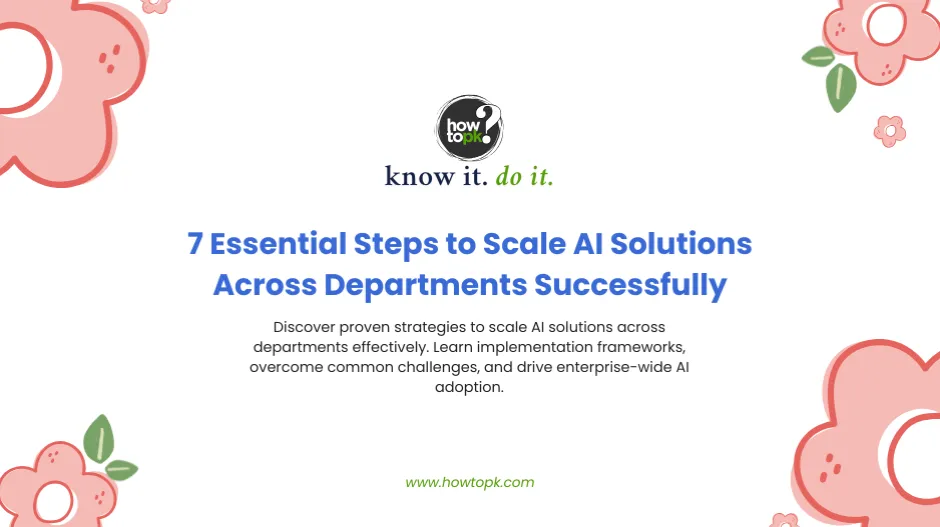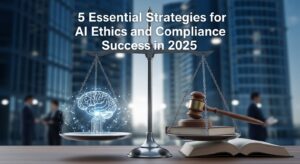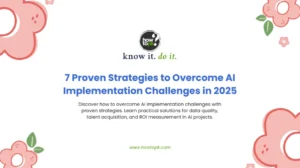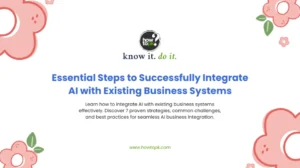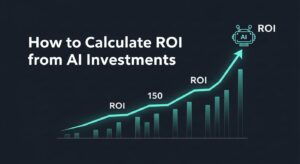The rapid evolution of artificial intelligence has transformed how organizations approach problem-solving and decision-making. Yet, many companies struggle with a critical challenge: how to scale AI solutions across departments effectively. While pilot projects may show promising results in isolated teams, expanding these successes organization-wide requires strategic planning, robust infrastructure, and careful change management.
This comprehensive guide will explore proven methodologies for scaling AI initiatives beyond their initial departmental boundaries, helping you build a cohesive, enterprise-wide AI ecosystem that drives measurable business value.
Understanding the AI Scaling Challenge
Before diving into implementation strategies, it’s essential to recognize why scaling AI solutions across departments presents unique difficulties. Unlike traditional software deployments, AI systems require continuous learning, adaptation, and fine-tuning. Each department operates with distinct workflows, data structures, and success metrics, creating complexity that demands thoughtful orchestration.
Consider this: What specific obstacles has your organization encountered when attempting to expand successful AI pilots? Understanding these pain points will inform your scaling strategy and help you anticipate potential roadblocks.
Step 1: Establish a Centralized AI Governance Framework
The foundation of successfully scaling AI solutions lies in establishing clear governance structures. This framework should define roles, responsibilities, and decision-making processes across all departments participating in AI initiatives.
Key Components of AI Governance:
- Executive Sponsorship Senior leadership must champion AI initiatives and provide necessary resources. Without C-level commitment, departmental silos will persist, hindering effective scaling efforts.
- Cross-Functional AI Council Create a governing body with representatives from IT, legal, compliance, HR, and key business units. This council should meet regularly to review AI projects, allocate resources, and resolve conflicts.
- Standardized Approval Processes Implement consistent evaluation criteria for new AI projects, including risk assessments, compliance reviews, and ROI projections. This ensures all departments follow similar protocols when proposing AI solutions.
How might your current organizational structure support or hinder this type of centralized governance approach?
Step 2: Build Scalable Infrastructure to Scale AI Solutions
Technical infrastructure serves as the backbone for enterprise-wide AI deployment. Without robust, scalable systems, even the most promising AI solutions will struggle to expand beyond their original departments.
Infrastructure Considerations:
Component | Requirements | Scaling Benefits |
Cloud Platform | Multi-region availability, auto-scaling | Supports growing computational demands |
Data Pipeline | Real-time processing, quality validation | Ensures consistent data flow across departments |
Model Management | Version control, monitoring, rollback capabilities | Enables safe deployment and updates |
Security Framework | End-to-end encryption, access controls | Maintains compliance across all implementations |
Data Architecture Planning Successful AI scaling requires careful consideration of data architecture. Departments often maintain separate data silos, but AI solutions need integrated, high-quality datasets to function effectively across organizational boundaries.
Consider implementing a data mesh architecture that allows departments to maintain ownership of their data while providing standardized access patterns for AI applications. This approach balances autonomy with integration needs.
Step 3: Develop Department-Specific AI Implementation Strategies
Each department faces unique challenges and opportunities when adopting AI solutions. Rather than applying a one-size-fits-all approach, successful scaling requires tailored strategies that address specific departmental needs while maintaining overall organizational coherence.
Sales Department AI Integration
Sales teams typically focus on lead generation, customer relationship management, and revenue forecasting. AI solutions that scale AI solutions effectively in sales environments often include:
- Predictive lead scoring algorithms
- Automated customer segmentation
- Dynamic pricing optimization
- Conversation intelligence platforms
Implementation Approach: Start with existing CRM data to train predictive models, then gradually expand to include external data sources as the team becomes more comfortable with AI-driven insights.
Human Resources AI Adoption
HR departments can leverage AI for talent acquisition, employee engagement analysis, and performance prediction. Key considerations include:
- Bias detection and mitigation in hiring algorithms
- Privacy compliance for employee data
- Transparent decision-making processes
- Regular model auditing and validation
What potential concerns might HR professionals have about AI implementation, and how would you address them during the scaling process?
Finance and Accounting AI Solutions
Financial departments require high accuracy and regulatory compliance in their AI implementations. Focus areas include:
- Fraud detection and prevention
- Automated expense categorization
- Risk assessment modeling
- Regulatory reporting automation
Step 4: Address Data Quality and Integration Challenges
Poor data quality remains one of the primary obstacles to scaling AI solutions across departments. Each department may use different data formats, collection methods, and storage systems, creating integration challenges that must be resolved before successful scaling can occur.
Data Quality Framework:
- Standardization Protocols Establish consistent data formats, naming conventions, and quality metrics across all departments. This includes defining acceptable data quality thresholds and implementing automated validation processes.
- Master Data Management Implement systems that maintain single sources of truth for critical business entities like customers, products, and vendors. This ensures AI models across departments work with consistent, accurate information.
- Data Lineage Tracking Maintain detailed records of data origins, transformations, and usage patterns. This transparency helps build trust in AI solutions and supports compliance requirements.
Step 5: Implement Comprehensive Training and Change Management
Technical implementation represents only part of the challenge when scaling AI solutions. Successful adoption requires comprehensive training programs and change management strategies that address both technical skills and cultural adaptation.
Training Program Components:
- Executive Education Leadership teams need to understand AI capabilities, limitations, and strategic implications. Focus on business value, risk management, and long-term planning considerations.
- Technical Skills Development Different departments require varying levels of technical AI knowledge. Develop tiered training programs that range from basic AI literacy to advanced model development and deployment.
- Change Management Strategies Address common concerns about AI adoption, including job displacement fears, privacy concerns, and skepticism about AI capabilities. Transparent communication and gradual implementation help build confidence and acceptance.
How would you customize training approaches for departments with different technical backgrounds and AI comfort levels?
Step 6: Monitor Performance and Scale AI Solutions Iteratively
Continuous monitoring and optimization are crucial for maintaining AI solution effectiveness as they scale across departments. This requires establishing comprehensive metrics, feedback loops, and improvement processes.
Performance Monitoring Framework:
- Business Metrics Tracking Monitor how AI solutions impact key performance indicators specific to each department. This includes revenue impact, cost savings, efficiency improvements, and customer satisfaction changes.
- Technical Performance Metrics Track model accuracy, processing speed, resource utilization, and system reliability. Establish alerts for performance degradation and implement automated remediation where possible.
- User Adoption Analytics Monitor how employees interact with AI solutions, including usage patterns, feature adoption rates, and user satisfaction scores. This data informs future training and development priorities.
Iterative Improvement Process:
- Regular Review Cycles: Conduct quarterly reviews of AI performance across all departments
- Feedback Collection: Gather input from end users, technical teams, and business stakeholders
- Model Updating: Implement systematic model retraining and updating procedures
- Capability Expansion: Identify opportunities to extend AI solutions to new use cases or departments
Step 7: Build Long-term AI Scaling Sustainability
Creating sustainable AI scaling requires forward-thinking approaches that anticipate future needs and challenges. This includes talent development, technology evolution planning, and organizational capability building.
Sustainability Strategies:
- Internal AI Expertise Development Build internal capabilities rather than relying solely on external vendors. This includes hiring data scientists, training existing staff, and developing internal AI development processes.
- Vendor Relationship Management Establish strategic partnerships with AI technology providers that support long-term scaling objectives. Negotiate contracts that include training, support, and technology evolution provisions.
- Innovation Pipeline Management Create processes for identifying, evaluating, and piloting new AI technologies and use cases. This ensures your organization stays current with AI advancements and market opportunities.
Common Pitfalls to Avoid When Scaling AI Solutions
Learning from common mistakes can significantly improve your AI scaling success rate. Here are key pitfalls to avoid:
- Underestimating Change Management Requirements Technical implementation often progresses faster than organizational adaptation. Allow adequate time and resources for training, communication, and cultural change.
- Neglecting Data Governance Without proper data governance, AI solutions may produce inconsistent or unreliable results across departments. Establish clear data standards before beginning large-scale deployments.
- Insufficient Success Measurement Clearly define success metrics before implementation begins. Vague or inconsistent measurement approaches make it difficult to demonstrate value and secure continued investment.
- Ignoring Compliance and Risk Management AI solutions must comply with industry regulations and organizational risk tolerances. Include compliance teams in planning processes from the beginning.
Future-Proofing Your AI Scaling Strategy
As AI technology continues evolving rapidly, successful scaling strategies must anticipate future developments and maintain adaptability. Consider these forward-looking approaches:
- Emerging Technology Integration Stay informed about developments in areas like generative AI, edge computing, and automated machine learning. Plan how these technologies might enhance your existing AI solutions.
- Regulatory Compliance Evolution AI regulations continue developing globally. Build flexible systems that can adapt to changing compliance requirements without major architectural changes.
- Scalability Architecture Design AI systems with future growth in mind. This includes modular architectures, containerized deployments, and cloud-native technologies that support rapid scaling.
Measuring ROI and Business Impact
Demonstrating clear return on investment remains critical for securing continued support for AI scaling initiatives. Establish comprehensive measurement frameworks that capture both quantitative and qualitative benefits.
ROI Measurement Approaches:
- Direct Cost Savings Track reductions in labor costs, processing time, and operational expenses directly attributable to AI implementations.
- Revenue Enhancement Monitor increases in sales, customer retention, and new business acquisition that result from AI-powered insights and automation.
- Risk Reduction Quantify improvements in compliance, fraud prevention, and operational risk management that AI solutions provide.
- Strategic Value Creation Assess longer-term benefits like improved decision-making speed, enhanced customer experiences, and competitive advantages that AI capabilities enable.
Conclusion: Your Path to Successful AI Scaling
Successfully scaling AI solutions across departments requires careful orchestration of technology, people, and processes. The strategies outlined in this guide provide a roadmap for transforming isolated AI successes into enterprise-wide capabilities that drive sustainable business value.
Key takeaways for your AI scaling journey:
- Establish strong governance foundations before beginning large-scale deployments
- Invest in robust infrastructure that can support growing AI demands
- Customize implementation approaches for each department’s unique needs
- Prioritize data quality and integration from the beginning
- Provide comprehensive training and change management support
- Monitor performance continuously and iterate based on results
- Plan for long-term sustainability and future technology evolution
The organizations that successfully scale AI solutions across departments will gain significant competitive advantages in the years ahead. By following these proven strategies and learning from both successes and setbacks, you can build AI capabilities that transform how your entire organization operates and competes.
What aspects of AI scaling present the greatest opportunities for your organization, and which challenges will require the most focused attention as you begin this transformation journey?

